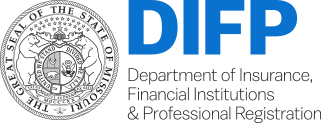NEWS RELEASE: Missouri drivers should keep their eyes on the road as deer movement spikes this time of year
Missouri DCI sent this bulletin at 10/30/2018 07:59 AM CDT|
|
Missouri drivers should keep their eyes on the road as deer movement spikes this time of year
FOR IMMEDIATE RELEASE
Date: October 29, 2018
Media Contact:
Lori Croy, Director of Communications
(573) 751-2562
news@difp.mo.gov
Missouri averaged more than 4,000 vehicle-deer collisions in 2017
Jefferson City, Mo –Travel on Missouri roads in the autumn can be both beautiful and dangerous. Drivers should be on the lookout for deer, as they are most active from October through December. According to the Missouri State Highway Patrol’s Statistical Analysis Center, there were over 4,000 deer involved collisions in Missouri last year.
Rutting or mating season for deer is October through December. It is also the time that many herds migrate. This rise in the animal population significantly increases your risk of hitting an animal while driving your vehicle. The National Highway Safety Administration (NHSA) reports there are about 1.5 million annual deer-related auto accidents.
Are You Covered?
Damage to a vehicle from a collision with an animal is covered under an auto policy’s optional comprehensive coverage. If you have only collision coverage or liability coverage, your insurance carrier will not cover damage to your vehicle resulting from a collision with an animal. The NHSA estimates damage caused by deer accidents alone result in more than $1 billion in annual uninsured losses. To make sure your vehicle is covered for animal collisions, contact your agent or carrier to discuss adding comprehensive coverage to your policy. Filing a claim for an accident covered by your comprehensive coverage means you’ll still need to pay a deductible. After that, your insurer will cover the costs of the claim up to your policy limits.
How to Avoid an Animal Collision
These tips may help reduce your chances of an animal collision:
- Deer tend to travel in herds, so if you see one, lookout for more that may follow.
- Deer signs are placed at known deer-crossing areas. Pay attention and reduce your speed when you see these signs.
- Be extra cautious during dawn and dusk hours, when animals tend to be more active. Stay alert and watch your speed.
- Make sure your headlights are in working order to improve your night vision. Using high beams can help spot wildlife, but be considerate of other drivers when using them.
- Stay focused while driving. Do not text, talk on your phone or allow passengers to distract you.
- Always wear your seat belt. This won’t prevent a collision but it can save your life in the event of an accident.
What to do After an Animal Accident
Some accidents are unavoidable. Knowing how to react in the event of an animal strike can help keep you safe. If you are about to hit a deer or other animal, hold firmly onto the steering wheel, apply your brakes and come to a stop. If you can’t avoid striking the animal, try not to swerve. If you do swerve, you could lose control and hit a tree or veer into oncoming traffic. After a collision with an animal, follow these steps.
- Stay calm.
- If possible, move your vehicle to a safe place and turn on your hazard lights. This may mean pulling over to the shoulder of the highway.
- If you can’t move your car, or the animal carcass is blocking traffic, alert the authorities so they can clear the roadway.
- Document the incident by taking photos of your vehicle damage, the roadway and any injuries sustained.
- Check to see if your vehicle is safe to operate. Check for leaking fluid, damaged lights, loose parts or other safety hazards. When in doubt, call a tow truck.
- If the animal is still on the scene, stay as far away from it as possible. Even though you may need to document the accident, do not approach the animal. A frightened or injured deer can be very unpredictable if approached. The authorities are better equipped to deal with a potentially dangerous animal.
If you have insurance questions regarding deer-related accidents contact the Missouri Department of Insurance.
Insurance Consumer Hotline: 800-726-7390Visit us on the web at: https://insurance.mo.gov/
About the Missouri Department of Insurance, Financial Institutions & Professional Registration
The Missouri Department of Insurance, Financial Institutions and Professional Registration (DIFP) is responsible for consumer protection through the regulation of financial industries and professionals. The department's seven divisions work to enforce state regulations both efficiently and effectively while encouraging a competitive environment for industries and professions to ensure consumers have access to quality products.
###


